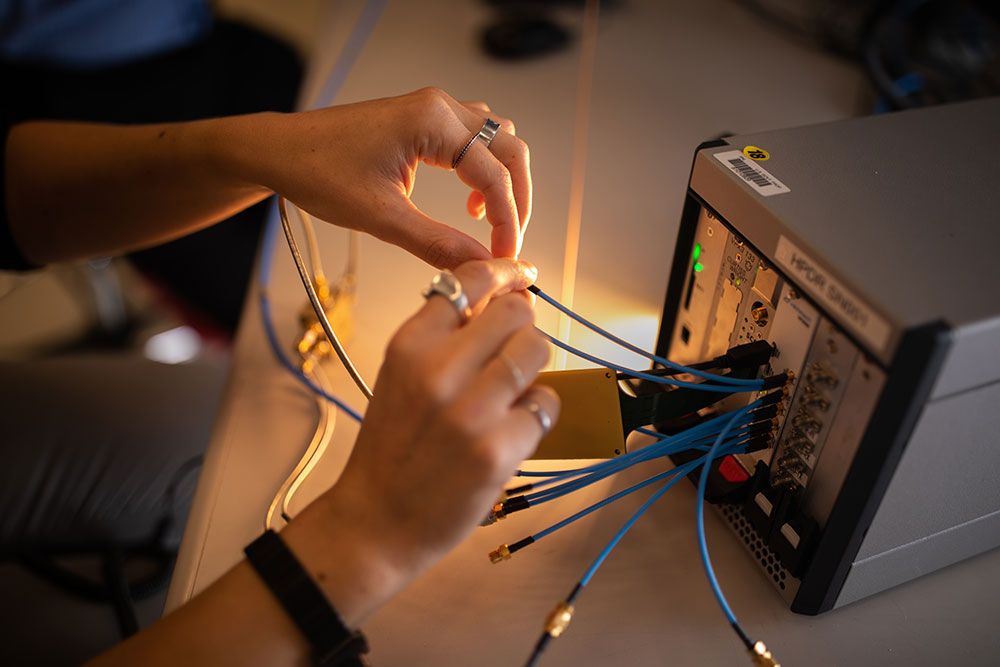
Agile waveform development for radar
Leveraging the efforts of Multimission Radio Frequency Architecture hardware, firmware and software; Agile Waveform Laboratory Directed Research and Development; and Radar Analysis, Modeling, Simulation and Emulation Suite teams, a set of successful lab-bench tests were completed demonstrating the new waveform-agile radar capability via real-time matched-filter processing in hardware. A test is being planned to further demonstrate radar capabilities in flight. (5000, LDRD)
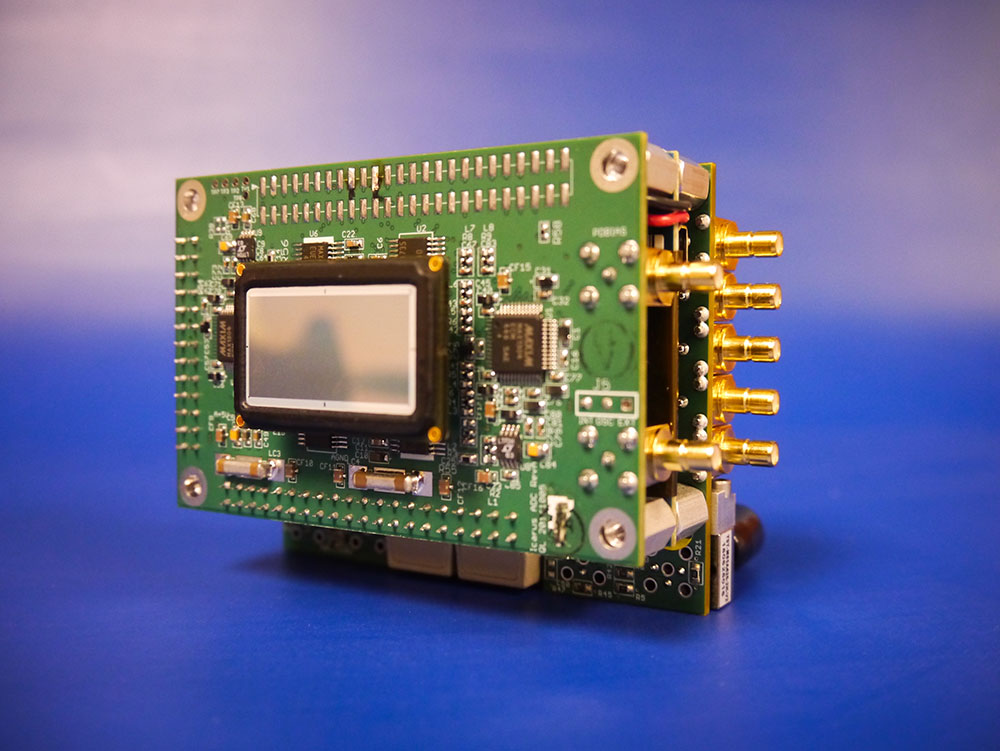
Commercialization of ultrafast imagers
Sandia has invented the world’s fastest burst-mode camera to look at nuclear fusion in real time, and now the technology is going commercial. The Labs is licensing patents for the ultrafast imager technology to Advanced hCMOS Systems LLC, co-founded by former staff members. After commercialization, the cameras could be more widely available across the DOE complex, and for medical imaging and university research. (1000, 5000)
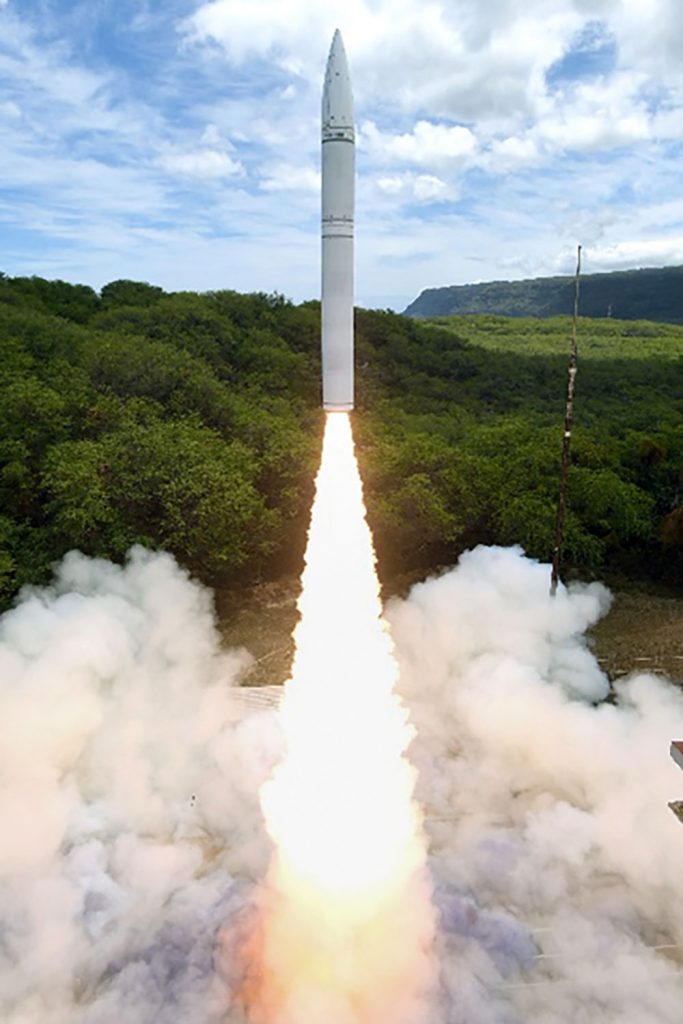
Technical and mission integration for hypersonics
Sandia served as the technical and mission integrator for the first Joint Flight Campaign mission of the conventional prompt strike all-up-round missile for the Navy and Army. The test was the first flight of a purpose-built, two-stage rocket that will deliver hypersonic weapons to fulfill a high-priority mission need for the nation’s warfighters. Sandia also secured the enduring role as design agent for the common hypersonic glide body. (1000, 2000, 5000, 10000)
Falconer: sounding rocket payloads
The Falconer team developed three experimental flight-worthy payloads and ground-test equipment in support of two sounding rocket flights. The team planned and executed six static field tests and assembled four flight payloads in five months, addressing a critical national security challenge. The team built on decades of radio frequency expertise, a maturing technology, to deliver the payloads. In recognition of this success, the team received a Team Employee Recognition Award. (5000)
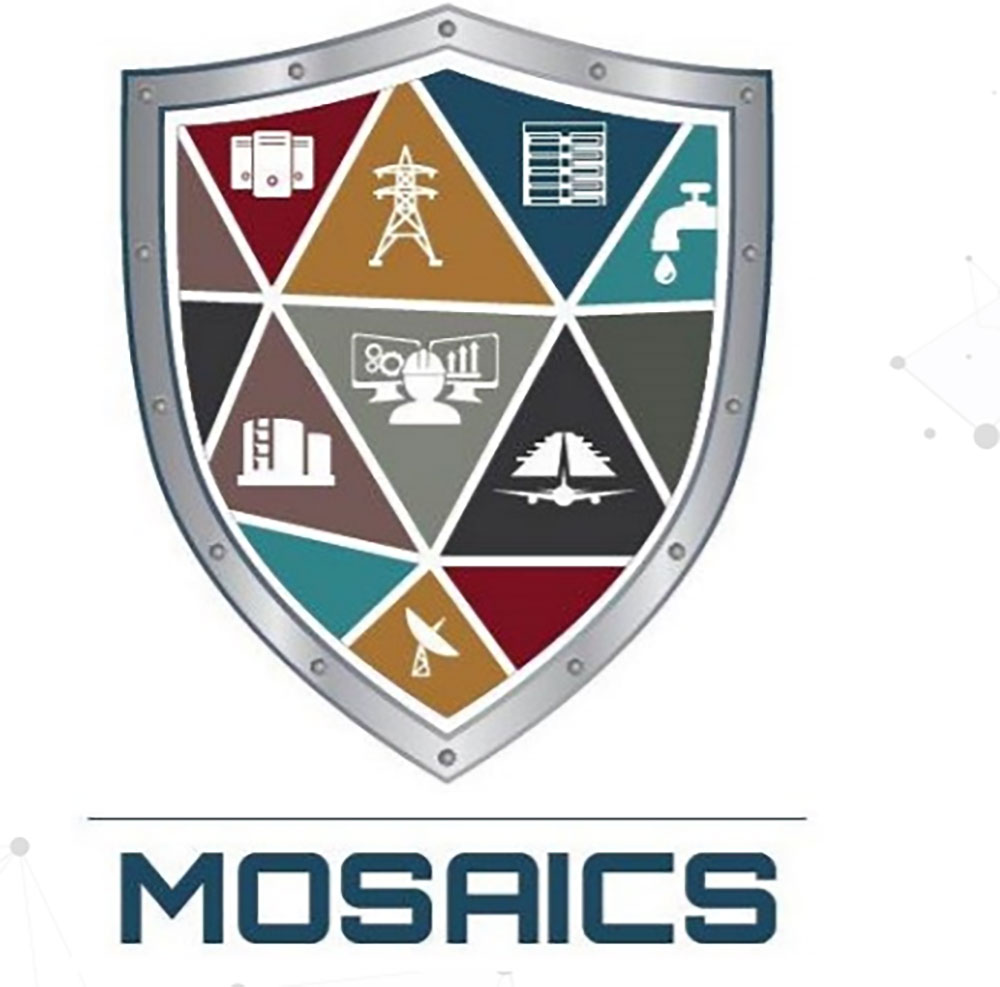
Cyberdefense for critical infrastructure
More situational awareness for industrial control systems, or MOSAICS, is a new comprehensive, integrated and automated cyberdefense capability for industrial control systems. It enables system operators to more quickly, easily and effectively detect and characterize cyberattacks against critical infrastructure systems in real time. The MOSAICS Joint Capability Technology Demonstration successfully completed a program to deliver the first operational cyberdefense capability for a live electrical distribution system. (5000, INL, PNNL)
Foreign Nuclear Weapons Intelligence Initiative
The Labs’ Foreign Nuclear Weapons Intelligence Initiative received the National Intelligence Meritorious Unit Citation award from the Office of the Director of National Intelligence, capping the group’s most successful year since its inception in 2010. Sandia teams completed 26 technical assessments, exceeding the goal of 15. The award recognizes the strategic planning and high-quality analyses that Sandia provided to the national intelligence office. (1000, 5000)
Sidetrack engages UAS threats
The Advanced Engagement Systems team in the Next-gen Communication Solutions group delivered final Sidetrack units, successfully completing all system requirements. Sidetrack provides an advanced electronic warfare engagement capability through a platform-agnostic hardware set capable of targeting unmanned aerial system threats in a single payload. The team transitioned Sidetrack to operations and maintenance and began future upgrades. The team plans to provide ongoing operations support for users as they exercise the system. Sidetrack has fostered key partnerships while demonstrating the Labs’ technical expertise. (5000)
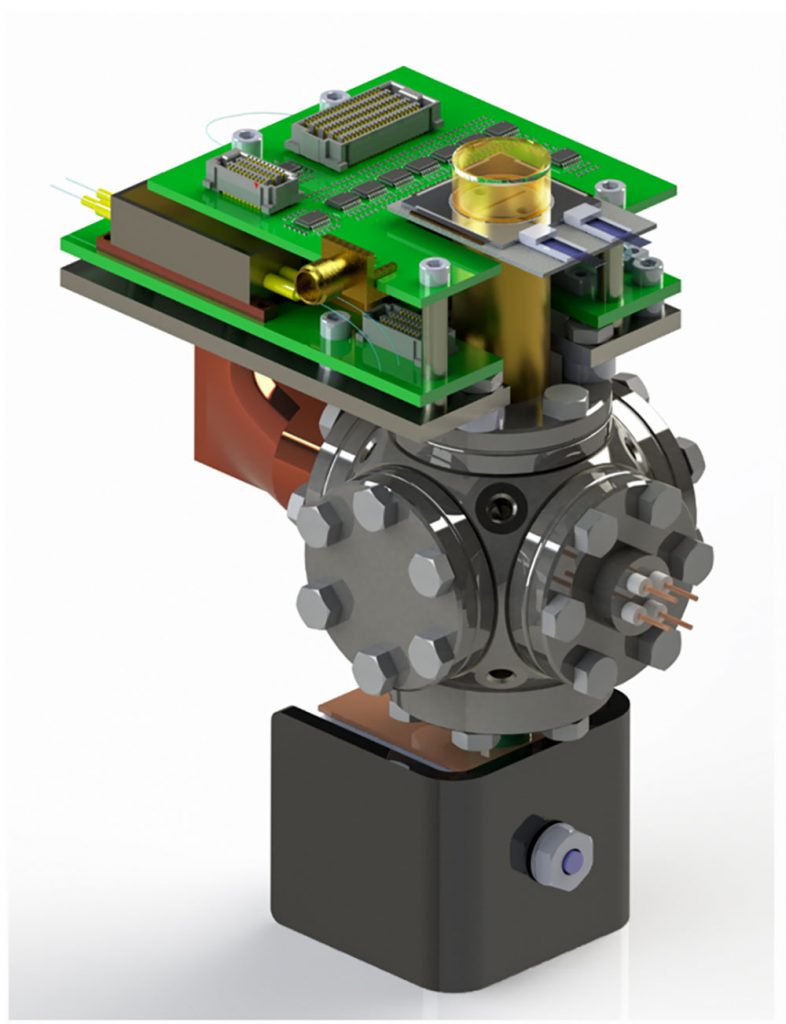
World’s first ion trap qubits with integrated photon detectors
The Labs recently demonstrated the world’s first surface-ion trap with integrated single photon avalanche detectors, enabling the trapping and detection of an atom of ytterbium by sensing the individual photons emitted by the trapped atom. The demonstration is a key step toward the realization of low-power, highly accurate, compact atomic clocks with important applications for future quantum computers and sensing systems based on trapped ions. The work was featured on the cover of Applied Physics Letters. (5000)
Advancing hypersonics through low-cost rockets
The High Operational Tempo for Hypersonics team launched two sounding rockets from NASA’s Wallops Flight Facility in Virginia to support the Navy’s Conventional Prompt Strike and the Army’s Long-Range Hypersonic Weapon programs. They came nearly a year after the first successful H4H campaign launched three sounding rockets carrying 23 experiments. The latest campaign flew nominal lofted and depressed trajectories carrying 24 experiments. The depressed-trajectory rocket spent approximately 56 seconds above Mach 9 — achieving a new relevant hypersonic environment flight profile. (1000, 2000, 3000, 4000, 5000, 6000, 7000, 8000, 9000, 10000)
Twitcher: antispoofing navigation technology
Sandia’s Navigation, Pointing and Control and Systems Integration team developed several signal-processing algorithms to simultaneously track multiple GPS positions in a noisy environment. The team successfully tracked multiple GPS signals and distinguish between spurious and accurate signals. (5000, LDRD)